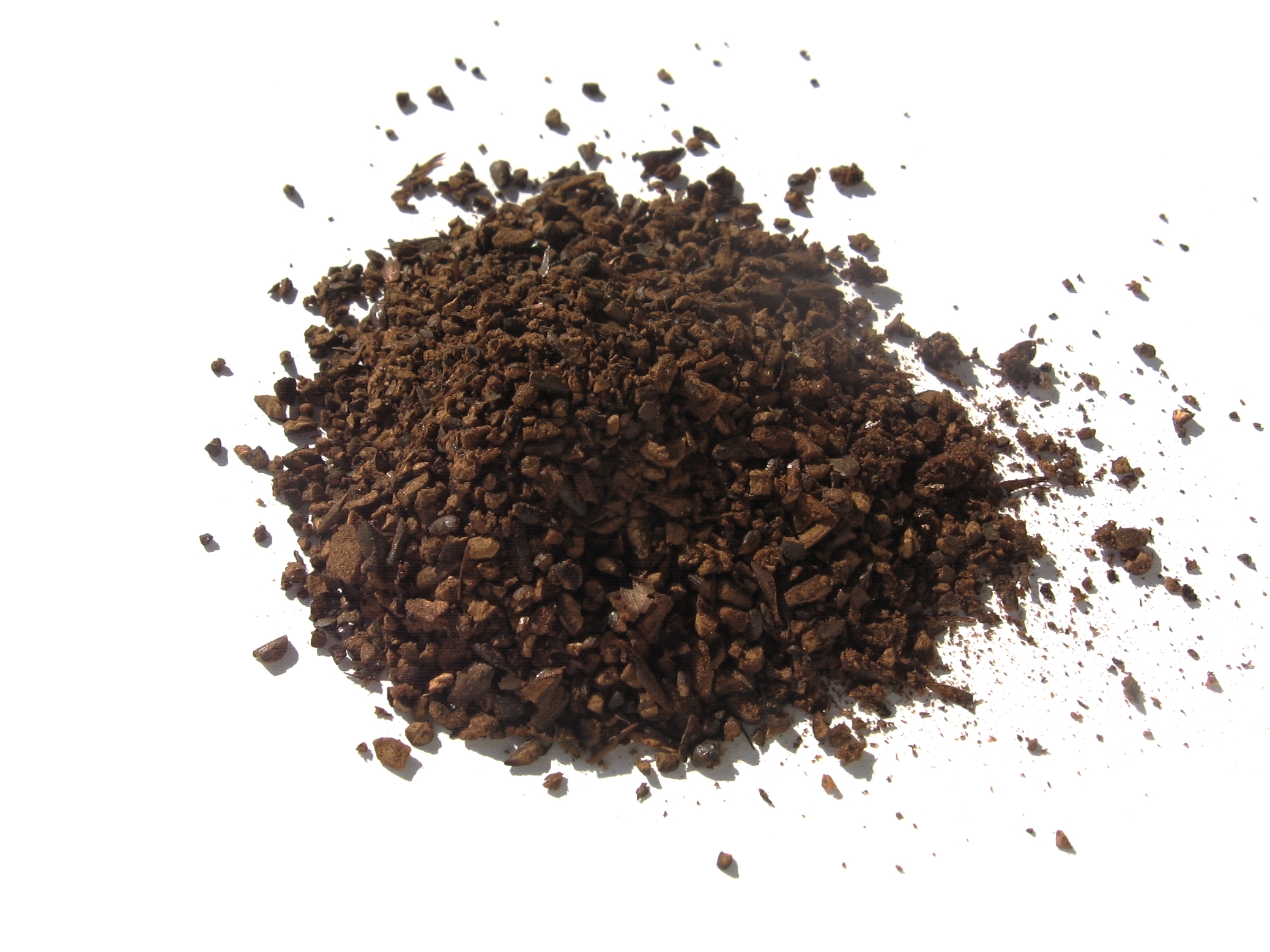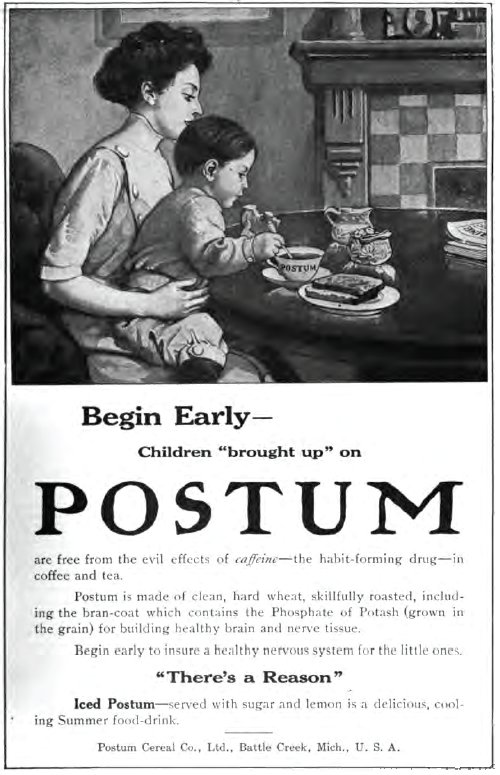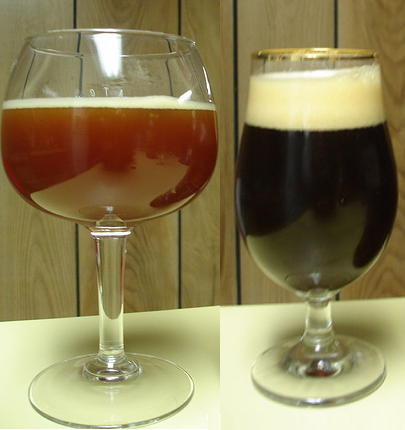|
Inka (beverage)
Inka is a Polish roasted grain drink. Developed in the late 1960s Inka has been produced in Skawina since 1971, a centre of coffee production since the early 20th century. Currently it is manufactured by GRANA Sp. Z O.O. While it was used in part as a coffee substitute to alleviate coffee shortages in the 1970s, Inka remains popular, in part because it is caffeine-free. It is exported to Canada and the United States as ''Naturalis Inka'' in packaging reminiscent of that used in Poland in the early 1990s. Inka is a roasted mixture of rye, barley, chicory, and sugar beet. Cereals make up 72% of the content and in the classic version there are no artificial ingredients or other additives. Additional varieties include supplements or flavouring. Inka is sold in the following varieties: * Inka Classic * Inka Pro-Health – fortified with additional magnesium. * Inka Flavoured – three varieties: with Chocolate, Milk (contains sugar), or Caramel * Inka Fibre * Inka Glute ... [...More Info...] [...Related Items...] OR: [Wikipedia] [Google] [Baidu] |
Roasted Grain Drink
A cereal coffee (also known as grain coffee, roasted grain drink or roasted grain beverage) is a hot drink made from one or more cereal grains roasted and commercially processed into crystal or powder form to be reconstituted later in hot water. The product is often marketed as a caffeine-free alternative to coffee and tea, or in other cases where those drinks are scarce or expensive. Several well-known cereal coffee brands are Caro (drink), Nestlé Caro, Postum, and Inka (drink), Inka. Other brands can be found at health food stores and at some grocery stores. Some common ingredients include toasted barley, malted barley, rye, chicory, molasses, and beet, beet root. Use Asia Cereal coffee is popular in East Asian cuisines—Korea,Alex Jung"20 delicious Korean drinks" CNN.com, October 13, 2011. Japan, and China each having one or more versions (usually roasted grains simply steeped in hot water). * Barley tea (''bori-cha'', ''dàmài-chá'', ''mugi-cha'') * Rice tea ** Brown r ... [...More Info...] [...Related Items...] OR: [Wikipedia] [Google] [Baidu] |
Magnesium
Magnesium is a chemical element with the symbol Mg and atomic number 12. It is a shiny gray metal having a low density, low melting point and high chemical reactivity. Like the other alkaline earth metals (group 2 of the periodic table) it occurs naturally only in combination with other elements and it almost always has an oxidation state of +2. It reacts readily with air to form a thin passivation coating of magnesium oxide that inhibits further corrosion of the metal. The free metal burns with a brilliant-white light. The metal is obtained mainly by electrolysis of magnesium salts obtained from brine. It is less dense than aluminium and is used primarily as a component in strong and lightweight alloys that contain aluminium. In the cosmos, magnesium is produced in large, aging stars by the sequential addition of three helium nuclei to a carbon nucleus. When such stars explode as supernovas, much of the magnesium is expelled into the interstellar medium where it ma ... [...More Info...] [...Related Items...] OR: [Wikipedia] [Google] [Baidu] |
Polish Drinks
Polish may refer to: * Anything from or related to Poland, a country in Europe * Polish language * Poles, people from Poland or of Polish descent * Polish chicken *Polish brothers (Mark Polish and Michael Polish, born 1970), American twin screenwriters Polish may refer to: * Polishing, the process of creating a smooth and shiny surface by rubbing or chemical action ** French polishing, polishing wood to a high gloss finish * Nail polish * Shoe polish * Polish (screenwriting), improving a script in smaller ways than in a rewrite See also * * * Polonaise (other) A polonaise ()) is a stately dance of Polish origin or a piece of music for this dance. Polonaise may also refer to: * Polonaises (Chopin), compositions by Frédéric Chopin ** Polonaise in A-flat major, Op. 53 (french: Polonaise héroïque, lin ... {{Disambiguation, surname Language and nationality disambiguation pages ... [...More Info...] [...Related Items...] OR: [Wikipedia] [Google] [Baidu] |
Coffee Substitutes
Coffee is a drink prepared from roasted coffee beans. Darkly colored, bitter, and slightly acidic, coffee has a stimulating effect on humans, primarily due to its caffeine content. It is the most popular hot drink in the world. Seeds of the ''Coffea'' plant's fruits are separated to produce unroasted green coffee beans. The beans are roasted and then ground into fine particles that are typically steeped in hot water before being filtered out, producing a cup of coffee. It is usually served hot, although chilled or iced coffee is common. Coffee can be prepared and presented in a variety of ways (e.g., espresso, French press, caffè latte, or already-brewed canned coffee). Sugar, sugar substitutes, milk, and cream are often used to mask the bitter taste or enhance the flavor. Though coffee is now a global commodity, it has a long history tied closely to food traditions around the Red Sea. The earliest credible evidence of coffee drinking in the form of the modern beverage ap ... [...More Info...] [...Related Items...] OR: [Wikipedia] [Google] [Baidu] |
Postum
Postum () is a powdered roasted grain beverage popular as a coffee substitute. The caffeine-free beverage was created by Post Consumer Brands, Post Cereal Company founder C. W. Post in 1895 and marketed as a healthier alternative to coffee. Post was a student of John Harvey Kellogg, who believed that caffeine was unhealthy. Post Cereal Company eventually acquired General Foods, then merged to Kraft Foods Inc. in 1990. Eliza's Quest Foods now owns the trademark rights and secret recipe of Postum. The "instant" drink mix version was developed in 1912, replacing the original brewed beverage. Postum is made from roasted wheat bran and molasses. In addition to the original flavor, coffee-flavored and cocoa-flavored versions have been introduced. History Postum quickly became popular, making Post wealthy. The aggressive advertising, with the slogan "There's a Reason", warned against the alleged dangers of coffee and caffeine, and promoted the benefits of Postum. When imitations appea ... [...More Info...] [...Related Items...] OR: [Wikipedia] [Google] [Baidu] |
List Of Barley-based Drinks
This is a list of barley-based drinks. Barley, a member of the grass family was one of the first domesticated grains in the Fertile Crescent and drinks made from it range from thin herbal teas and beers to thicker drinkable puddings and gruels. Barley has been used as a source of fermentable material for beer for thousands of years and whiskey for hundreds of years. Barley beer was probably one of the first alcoholic drinks developed by Neolithic humans. More recently it has been used as a component of various health foods and drinks. In 2016, barley was ranked fourth among grains in quantity produced (141 million tonnes) behind maize, rice and wheat. Barley-based drinks Traditional drinks * Barley milk * Barley water * Barley wine * Beer * Café de cebada * Caffè d'orzo (Coffee of Barley) * Emoliente * Malt drink * Malt liquor * Malt whisky * Malta (soft drink) * Malted milk * Pinol * Roasted barley tea * Talbina Commercial products * Amul Pro * Barleycup ... [...More Info...] [...Related Items...] OR: [Wikipedia] [Google] [Baidu] |
Caro (drink)
Caro is a brand of roasted grain drink, a caffeine-free coffee substitute made of roasted barley, malted barley, chicory, and rye. It is manufactured by Nestlé and was first introduced in West Germany in 1954. It is available throughout Europe as well as other markets including New Zealand and Australia. It is imported to the United States under the name Pero and sold in Spain as Eko. Caro is available as an instant powder or as Caro Extra in granulated form. The name "Caro" references the German word "Karo", the term for the diamonds playing card suit, as seen in stylized form in the product logos used in Germany and the United States, and in the Spanish product until the early 2000 when the branding was restyled. History The company's history goes back to the time of Frederick II, who imposed high taxes on coffee beans. The company's founder, Johann Heinrich Franck, found a coffee alternative in chicory, which was mixed with grain and roasted. In 1828 production started i ... [...More Info...] [...Related Items...] OR: [Wikipedia] [Google] [Baidu] |
Barleycup
Barleycup is an instant cereal drink, available in the United Kingdom, Ireland, Norway, Sweden, Denmark, Malta and Hong Kong. Barleycup was manufactured by the British company Ridpath Pek Ltd., until it was acquired in 2004 by the American firm Smithfield Foods Inc. and merged with Norwich Food Company Ltd. to form Smithfield Foods Ltd. UK. In 2013 the Barleycup brand was purchased by “Grana” Sp. z o.o., the company that had earlier been the manufacturer of beverages produced under this brand. The packaging and labels were modified in the same year. A new product was marketed in 2014 – Barleycup with Dandelion. At present, the following brand products are available on the British market: Barleycup powder 100g, Barleycup powder 200g, Barleycup granules 200g, Barleycup Organic 100g, Barleycup with Dandelion 100g. Barleycup's ingredients are roasted barley, rye, and chicory, plus, in the case of Barleycup with Dandelion, dandelion root and sugar beet. These beverages do no ... [...More Info...] [...Related Items...] OR: [Wikipedia] [Google] [Baidu] |
Caramel
Caramel ( or ) is an orange-brown confectionery product made by heating a range of sugars. It can be used as a flavoring in puddings and desserts, as a filling in bonbons, or as a topping for ice cream and custard. The process of caramelization consists of heating sugar slowly to around . As the sugar heats, the molecules break down and re-form into compounds with a characteristic colour and flavour. A variety of candies, desserts, toppings, and confections are made with caramel: brittles, nougats, pralines, flan, crème brûlée, crème caramel, and caramel apples. Ice creams sometimes are flavored with or contain swirls of caramel. Etymology The English word comes from French ''caramel'', borrowed from Spanish ''caramelo'' (18th century), itself possibly from Portuguese ''caramelo''. Most likely that comes from Late Latin ''calamellus'' 'sugar cane', a diminutive of ''calamus'' 'reed, cane', itself from Greek κάλαμος. Less likely, it comes from a Medieval Latin ' ... [...More Info...] [...Related Items...] OR: [Wikipedia] [Google] [Baidu] |
Milk
Milk is a white liquid food produced by the mammary glands of mammals. It is the primary source of nutrition for young mammals (including breastfed human infants) before they are able to digestion, digest solid food. Immune factors and immune-modulating components in milk contribute to milk immunity. Early-lactation milk, which is called colostrum, contains antibody, antibodies that strengthen the immune system, and thus reduces the risk of many diseases. Milk contains many nutrients, including protein and lactose. As an agricultural product, dairy milk is Milking, collected from farm animals. In 2011, Dairy farming, dairy farms produced around of milk from 260 million dairy cows. India is the world's largest producer of milk and the leading exporter of skimmed milk powder, but it exports few other milk products. Because there is an ever-increasing demand for dairy products within India, it could eventually become a net importer of dairy products. New Zealand, Germany and the ... [...More Info...] [...Related Items...] OR: [Wikipedia] [Google] [Baidu] |
Chocolate
Chocolate is a food made from roasted and ground cacao seed kernels that is available as a liquid, solid, or paste, either on its own or as a flavoring agent in other foods. Cacao has been consumed in some form since at least the Olmec civilization (19th-11th century BCE), and the majority of Mesoamerican people ─ including the Maya and Aztecs ─ made chocolate beverages. The seeds of the cacao tree have an intense bitter taste and must be fermented to develop the flavor. After fermentation, the seeds are dried, cleaned, and roasted. The shell is removed to produce cocoa nibs, which are then ground to cocoa mass, unadulterated chocolate in rough form. Once the cocoa mass is liquefied by heating, it is called chocolate liquor. The liquor may also be cooled and processed into its two components: cocoa solids and cocoa butter. Baking chocolate, also called bitter chocolate, contains cocoa solids and cocoa butter in varying proportions, without any added sugar. Powder ... [...More Info...] [...Related Items...] OR: [Wikipedia] [Google] [Baidu] |






.jpg)
